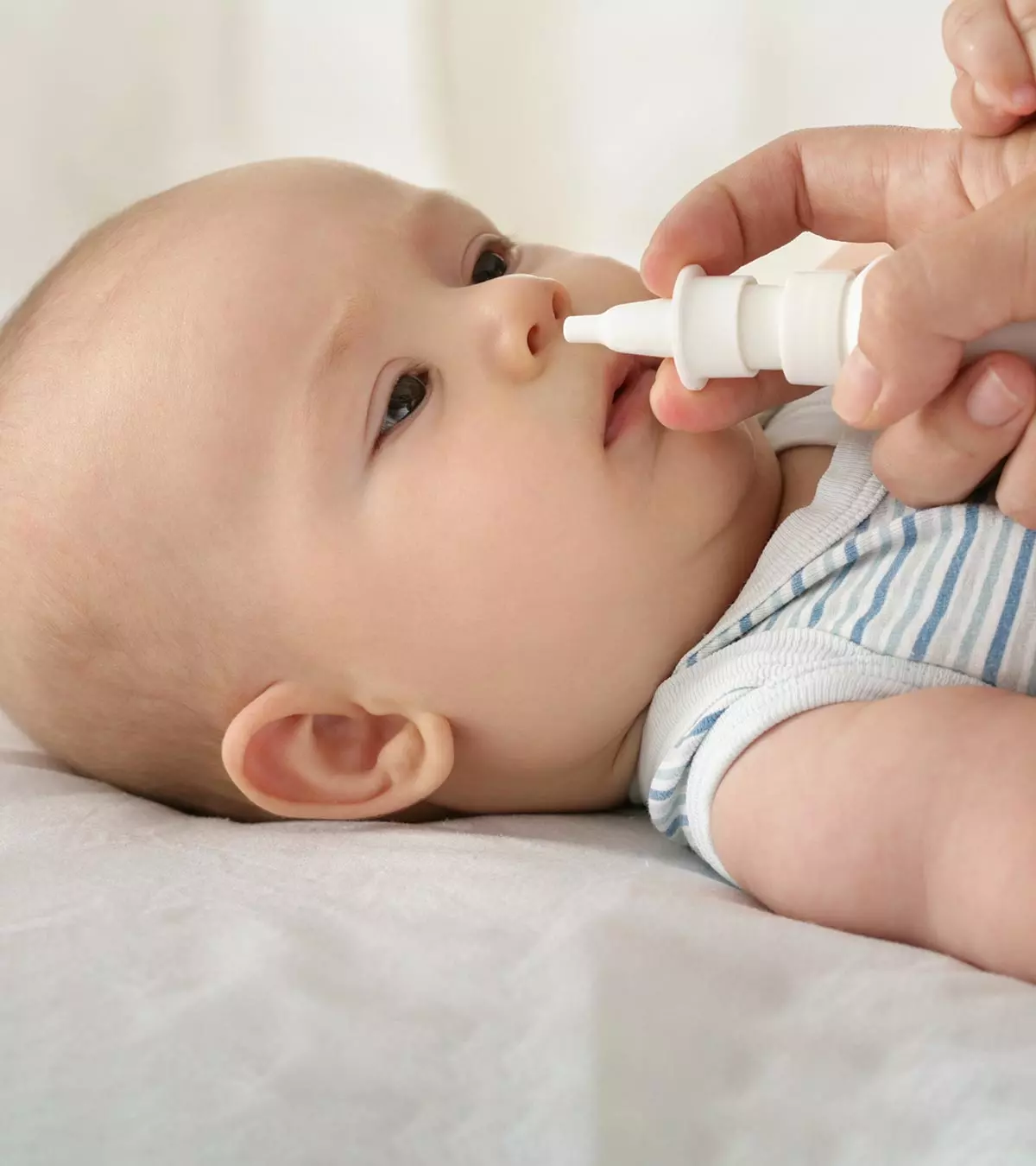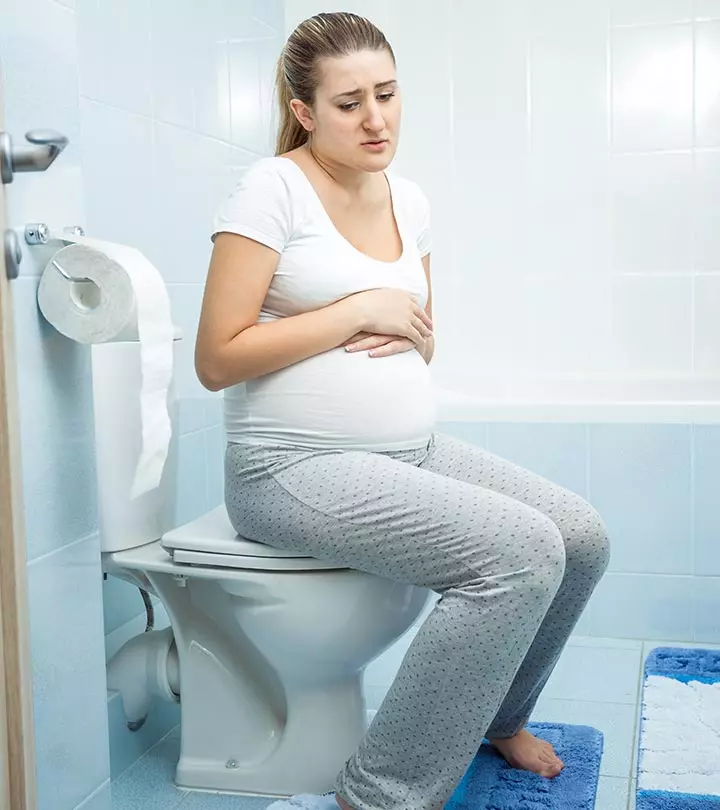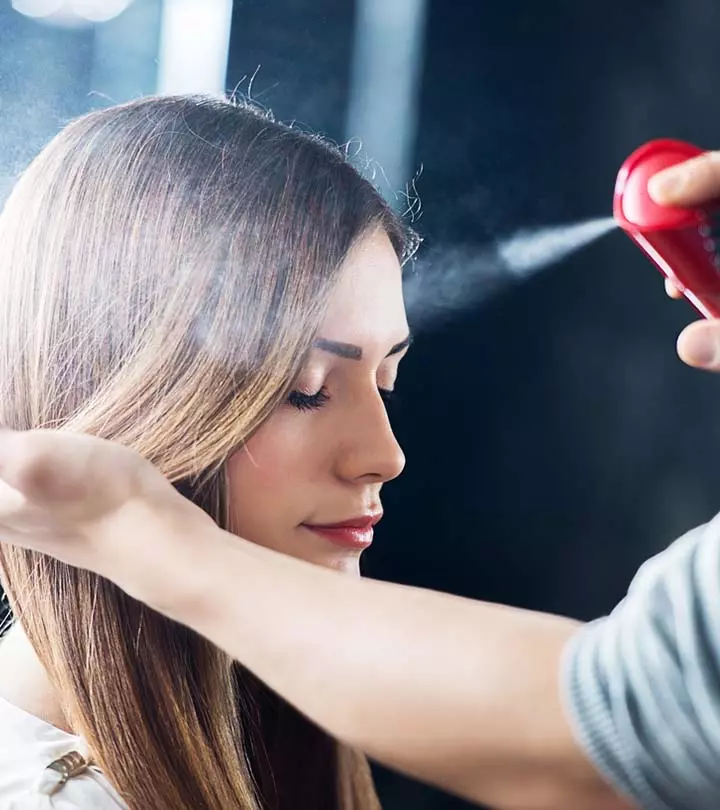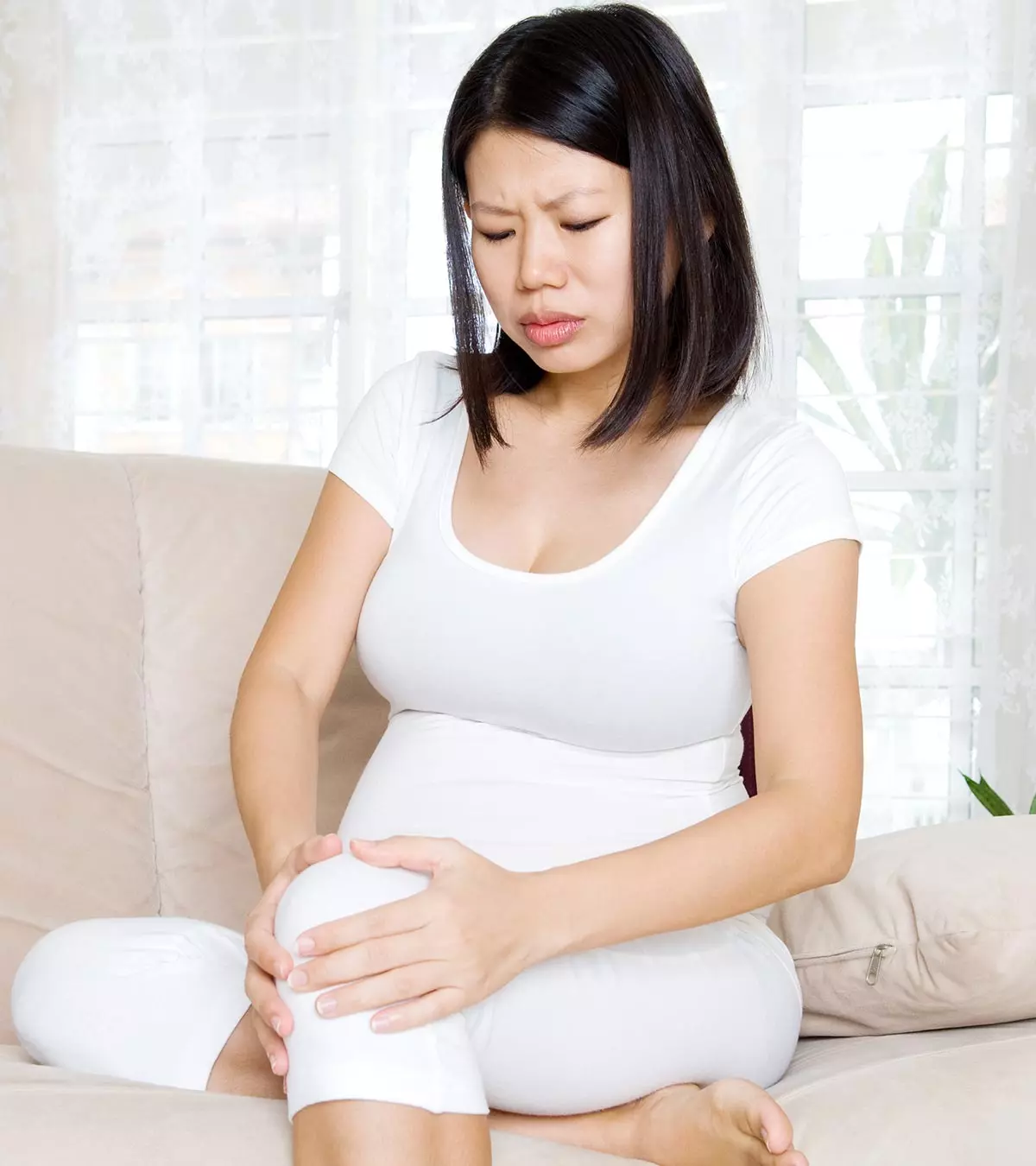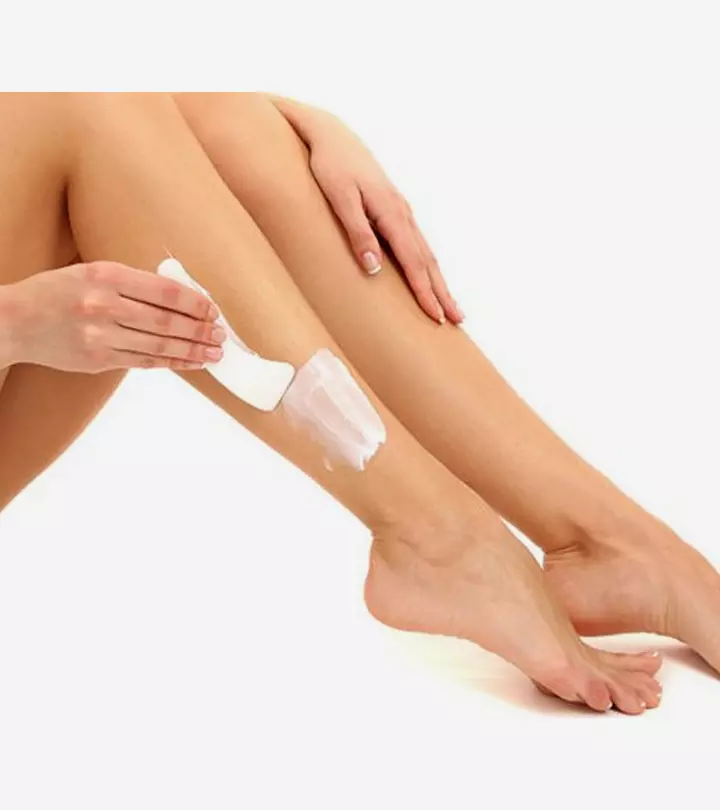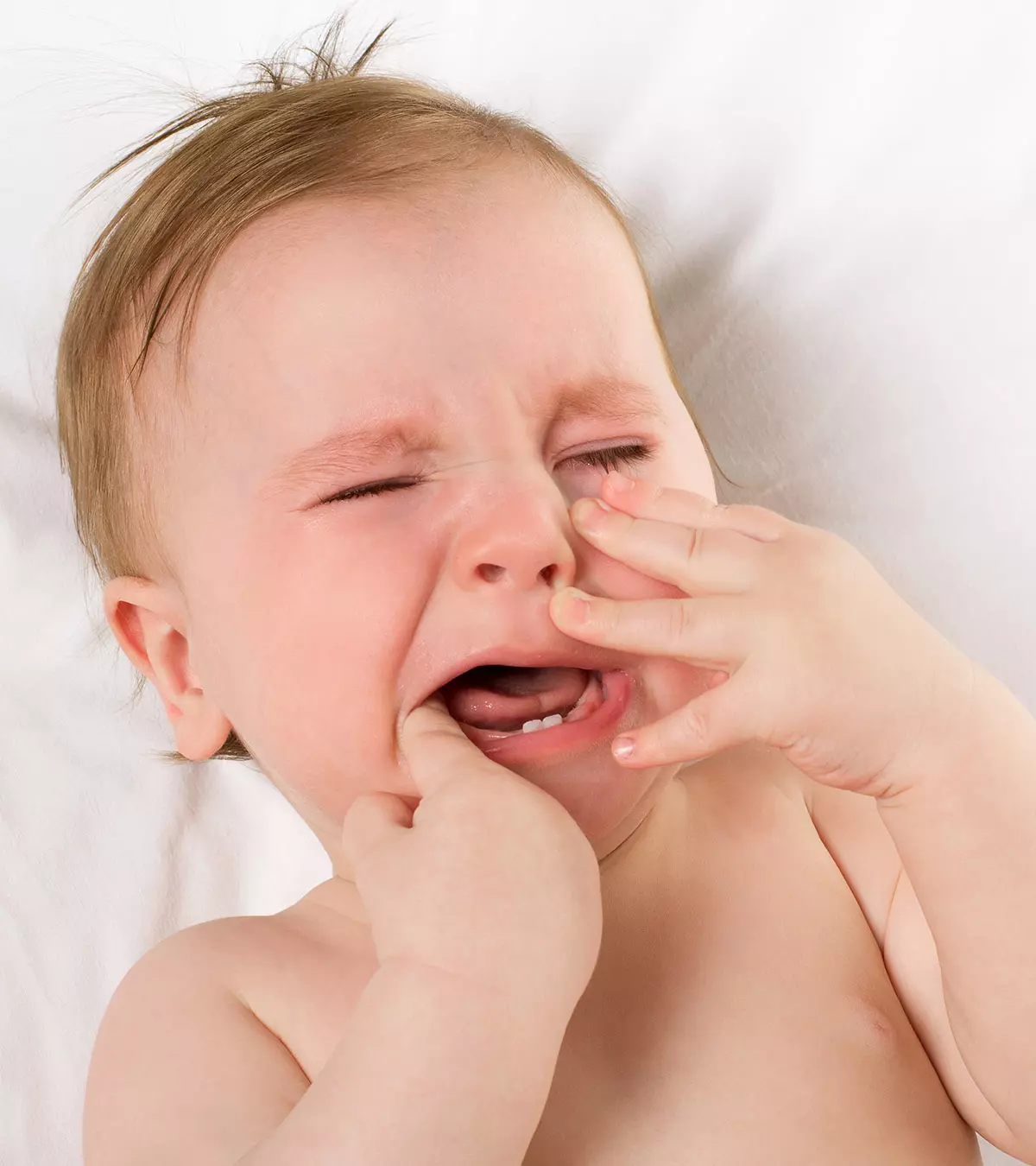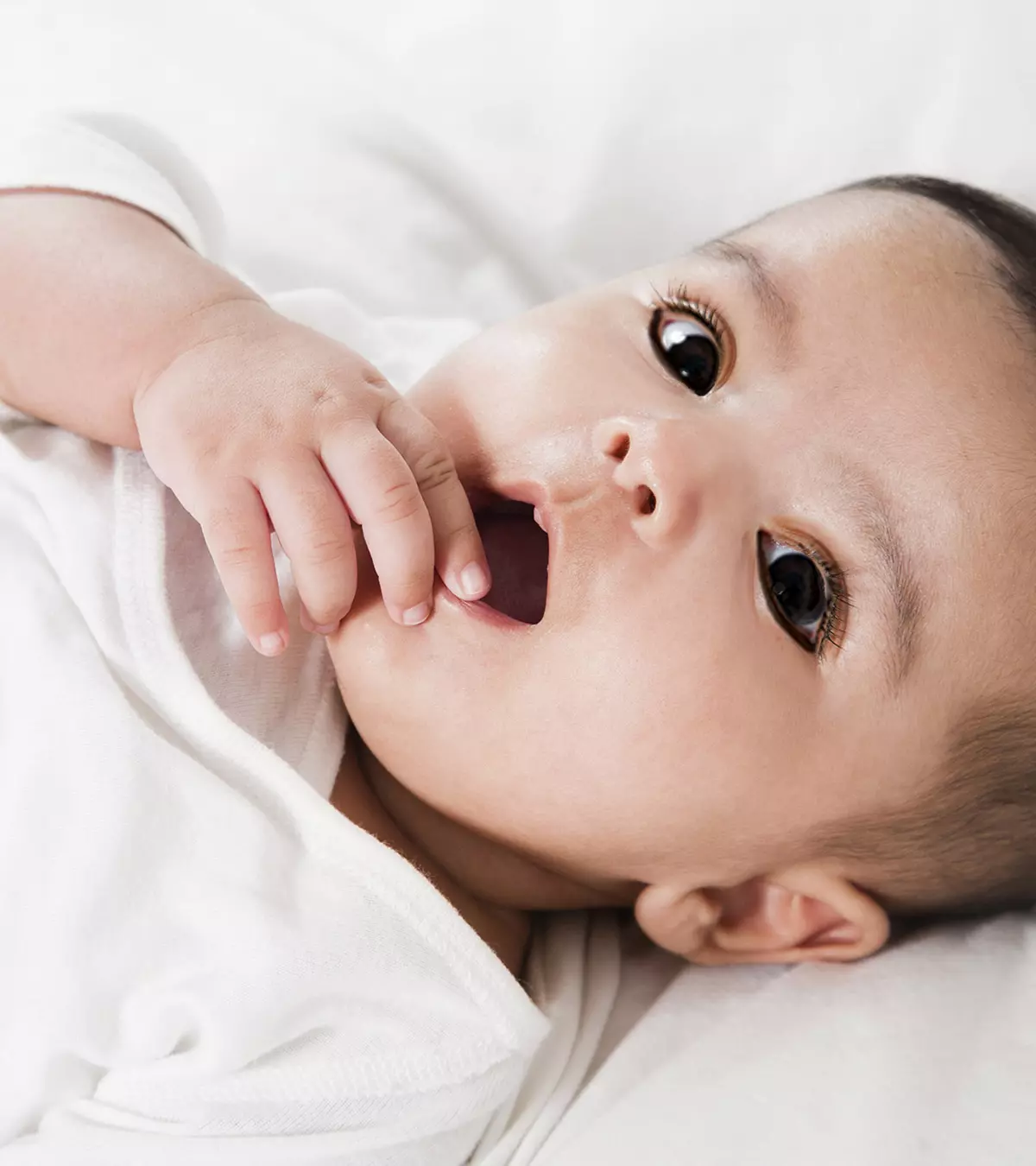
Image: Shutterstock
Kajal, also called Surma or kohl, has been commonly used as an eye care product or cosmetic since ancient times in India, Pakistan, the Middle East, and some parts of Africa (1). But, while adults use it commonly to adorn their eyes or for health benefits, is it safe to use kajal on a baby’s eyes? The kohl stone (galena) is processed into its ultra-fine form and incorporated with other therapeutically active ingredients to make kajal (2). Some people also make it at home using edible oils. Read this post to understand the safety, uses, possible alternatives, and some methods of preparing chemical-free kajal at home.
Key Pointers
- Kohl, also known as Kajal, is a cosmetic used for enhancing the appearance of the eyes.
- Using kajal on babies is disapproved by pediatricians due to the risk of irritation or other harmful effects.
- The use of kajal on babies is based on certain beliefs, such as protection against the evil eye and improvement of eye health.
- Before applying kajal to babies, it is recommended to consult a doctor.
Is Kajal Safe For Babies?

Image: Shutterstock
Kajal has been in use in several cultures. Although there is no research-based evidence available, people usually make kajal at home or buy the ones manufactured using natural ingredients.
However, in the past few years, research has said that kajal is not safe for babies. Most medical experts and healthcare organizations recommend against the use of kajal for babies (2) (3).
- According to the U.S. Food and Drug Administration (FDA), store-bought or commercial kajal is not safe for babies since it contains lead. The lead comes from the galena stone (kohl stone), which naturally contains the element. The FDA considers kajal as an illegal color additive in the US.
- Some researchers found that store-bought kajal has high levels of lead and other chemicals like galena, minium, amorphous carbon, magnetite, and zincite. These chemicals might harm the baby’s eyes.
Why Do People Use Kajal For Their Babies’ Eyes?
Kajal has been in use for generations in various Asian cultures.
- People believe that applying kajal to the baby’s eye keeps the evil eye away. However, there may not be any logical explanation for this belief or ritual. If you want to apply kajal for ceremonial reasons, then you may apply a dot on the forehead, cheek, under the feet, or some other part of the body.
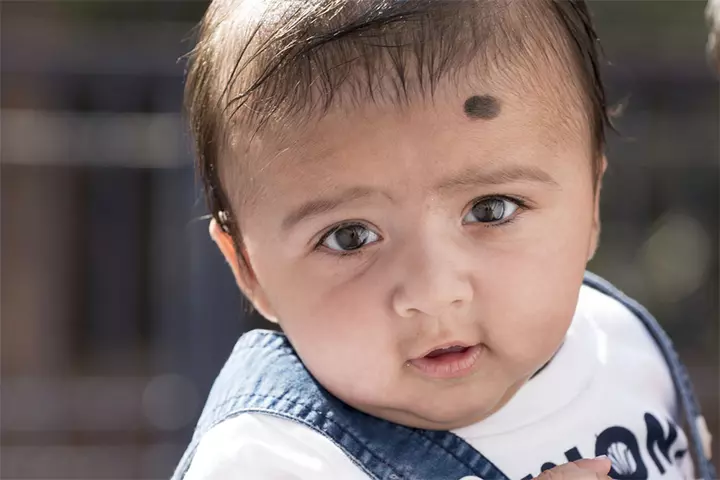
Image: Shutterstock
- There is a belief that applying kajal to the baby’s eye might enhance their beauty by making their eyes brighter, bigger, and longer. But there is no research-based evidence to prove this.
- It is believed that kajal will have a soothing effect on the baby’s eye. However, it might cause irritation, and this is one of the reasons why pediatricians advise against the use of kajal (4).
- Some people say that kajal helps the baby sleep better, but there is no scientific evidence on it.
- While there is also a belief that kajal helps in preventing diseases like conjunctivitis and blepharitisiA condition leading to an inflammation of the eyelids due to clogged oil glands . in babies, it may actually result in these diseases.
 Quick fact
Quick factWhat Are The Reasons To Avoid Kajal?
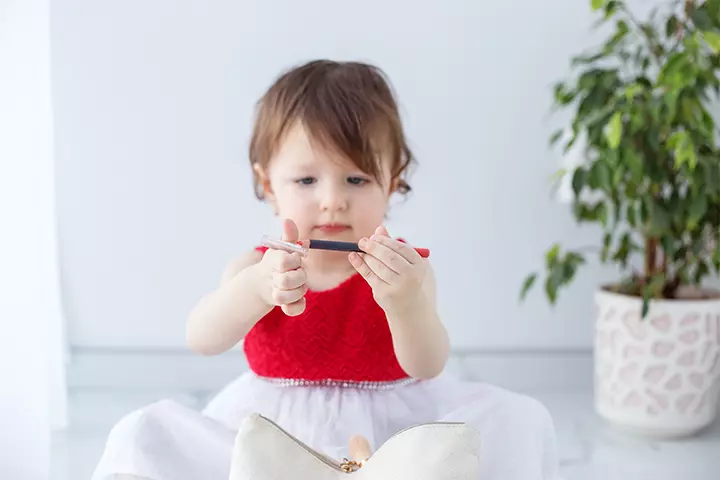
Image: IStock
The main reason to avoid kajal is its lead content, which can cause health issues. Below is the list of problems caused by lead and other reasons to avoid kajal (2) (3).
- According to the FDA, the use of commercial kajal could cause lead poisoning, which can increase the risk of developing anemia and kidney problems. Lead poisoning might also cause neurological damage that may lead to seizuresiA sudden and temporary electrical disturbance in the brain, leading to changes in behavior, feelings, or movements. and comaiA condition resulting in a state of deep unconsciousness in which a person fails to respond to a stimulus and cannot be awakened. .
- The prolonged application of kajal might increase lead levels in the body, thus causing adverse effects on the brain and bone marrow.
- Kajal is often applied with the fingertip. Observing poor hygiene while making the application could expose the baby’s eyes to pathogens.
The side-effects mentioned above are mostly relevant to the readymade black kajal available in the stores. However, a study found that homemade kajal too could contain some amount of lead (1). Also, even if you are making kajal at home, dirty fingers or rough edges of your nails can harm the baby’s eyes. Moreover, you may not be able to prepare kajal under strict hygienic conditions at home.
 Research finds
Research findsHow Is Kajal Made At Home?
Here is how kajal is made at home.
- Take two flat-bottom metal bowls and invert them.
- Put a flat metal plate, inverted, on the top of the bowls in a way that the plate would form a bridge.
- Place an earthen lamp filled with pure ghee or pure organic castor oil or almond oil under the bridge. Put a wick in it and light it.
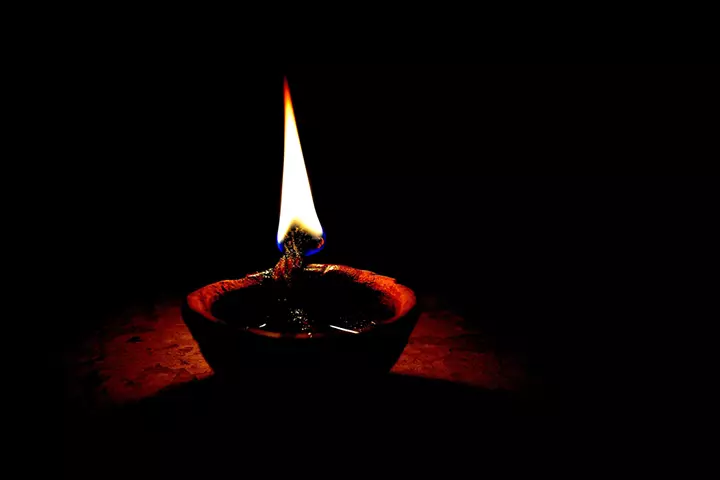
Image: Shutterstock
- The soot that is released from the lamp will get deposited on the surface of the plate.
- Use a knife to scrape away the soot and store it in a clean box.
- Add a few drops of pure ghee or castor oil to turn the soot into the paste-like consistency of kajal.
There is no medical evidence to prove that homemade kajal is safe for babies.
Therefore, consult your baby’s pediatrician before using a homemade or store-bought kajal for your babies.
Infographic: Why Do People Use Kajal For Their Babies’ Eyes?
Kajal has been used on babies for many generations in various cultures. Some parents may use kajal on their babies’ eyes for traditional reasons and benefits such as better eye health. But there are also potential risks associated with its use. So, learn why people use kajal for their babies’ eyes and the reasons to avoid it. Illustration: Momjunction Design Team
Frequently Asked Questions
1. Can kajal cause dark circles?
No, kajal does not lead to dark circles under the eyes. But since the pigment may spread over time, it may appear like dark circles.
2. Does kajal help eyelashes grow?
No, applying kajal or kohl does not aid in the growth of eyelashes.
3. What precautions should be taken when applying kajal to a baby’s eyes?
It is recommended to avoid putting kajal on the baby’s eyes as it contains high amounts of lead and might cause unwanted complications.
4. Can kajal affect a baby’s vision in any way?
Applying kajal on a baby’s eyes might give rise to irritation, allergy, or itchiness, which might, in severe cases, lead to loss of vision. Also, applying kajal on a baby’s eyes by a caregiver with uneven nails or dirty hands might cause irritation (2).
5. Can kajal be used on babies with sensitive skin or allergies?
It is not recommended to use kajal on babies prone to allergies or sensitive skin as it might lead to complications. However, consult a pediatrician first to be sure about the possible results and whether or not it is safe to be used on your baby.
Putting Kajal on a baby’s eye has been done for centuries in different cultures with the idea that it protects the baby from evil, prevents eye disorders and irritation, and promotes better sleep and a soothing effect. These beliefs, however, are based on no medical proof. While using store-bought Kajal is regarded as directly detrimental to babies owing to the presence of lead and other chemicals, the safety of homemade Kajal is also questioned, despite the use of safe components such as pure ghee or castor oil. If you insist on using Kajal on your baby, consult your baby’s pediatrician first.
Illustration: Kajal (Kohl) For Babies: Is It Safe Concerns And Beliefs
_for_babies_is_it_safe_concerns_and_beliefs_illustration.jpg.webp)
Image: Stable Diffusion/MomJunction Design Team
References
1. Evelyn Tiffany-Castiglioni, RolaBarhoumi, and Youssef Mouneimne,Kohl and surma eye cosmetics as significant sources of lead (Pb) exposure; Journal of Local and Global Health Science
2. AnupMohta, Kajal (Kohl) – A dangerous cosmetic; Oman Journal of Ophthalmology
3. Kohl, Kajal, Al-Kahal, Surma, Tiro, Tozali, or Kwalli: By Any Name, Beware of Lead Poisoning; U.S. Food and Drug Administration
4. SajithaPuthalath, Raman Dang, Kuntal Das,Total safety management through standardization of formulated ayurvedicKajal using Eclipta alba and Vernoniacinerea herbs; World Scientific News
5. Elisabet Navarro-Tapia et al., Toxic Elements in Traditional Kohl-Based Eye Cosmetics in Spanish and German Markets; International Journal of Environmental Research and Public Health.
Community Experiences
Join the conversation and become a part of our nurturing community! Share your stories, experiences, and insights to connect with fellow parents.
Read full bio of Dr. Richard Mario Lurshay
Read full bio of Dr. Ritika Shah
Read full bio of Rohit Garoo
Read full bio of Ghazia Shah






